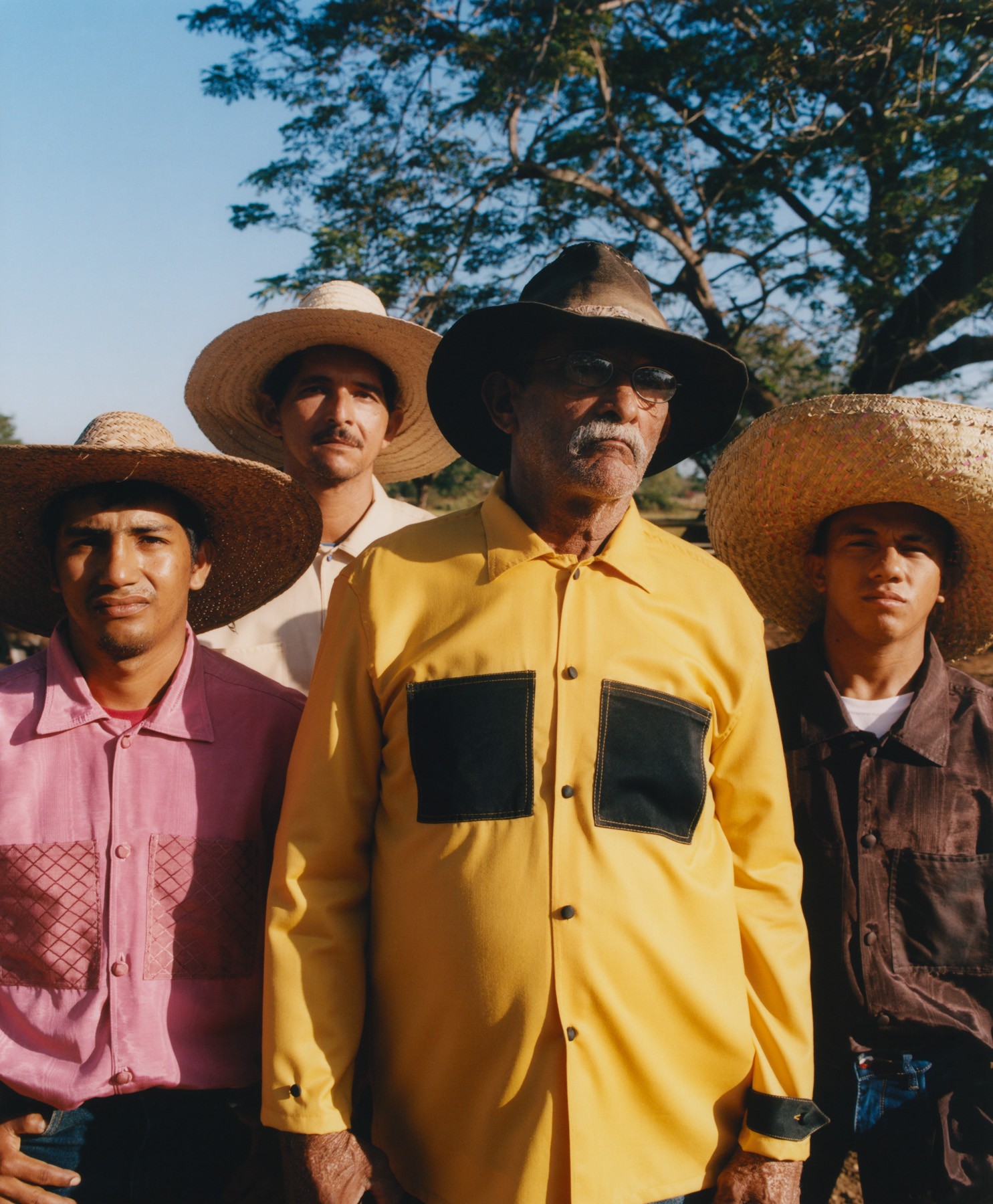From left: Miguel wears his own clothes. Greimar wears her own Joropo dress
Photographs by Silvana Trevale
Styling by Daniela Benaim
Silvana Trevale is a Venezuelan photographer based in London. Her work, which blends documentary and fashion, seeks to celebrate the human body and the world around her. This project, shot for Atmos Magazine Volume 8: Rhythm, took her back to the plains of Venezuela, where her family is from. She went to document Joropo, a genre of music which draws its inspiration directly from nature. The music, called la musica llanera, gets its name from the word “llano,” Spanish for plains. The environment, Travale said, was enchanting. She witnessed the most beautiful sunrises of her life and experienced music at every turn. Through her photos, she hopes to transmit the joy of her country and culture.















TALENT Miguel Carrero, Greimar Espinoza, Juan de Dios Castillo, Jhosmari Mirabal, Grecia Valentina Orlando Zapata, Luisamar Yecenia Hernández Viña, Mathias Gael Castillo Acuña, Carmen Gregoria Zapata Hernández, Janetzi Gutierrez, Alex Manuel Orlando Zapata, Miriam Rojas, Armando Medina, José Gregorio Hernández, Luisa Fernanda González Hernández, Guayacán (Rafael Alberto Cabeza Aular), Fredy Guedez, Rubén Barrios, Luisa Marina Gonzalez Hernandez, Eleuterio Antonio Pulido Aquino, Josein Nazareth Garcia Ortega, Victor Blanco, Andres Seijas, Miriam Rojas, Haschly Lusia González Hernández, Jhosmari Mirabal, Luisa Marina Gonzalez Hernandez, Greimar Espinoza, Lucrecia Bolivar MAKEUP Judith Padron HAIR Judith Padron TALENT DIRECTOR Sorelia Franco PRODUCTION Sorelia Franco, Dana Chocron PROP MAKER Victoria Maldonado CULTURAL CONSULTANT Juan Vicente Carrillo-Batalla PHOTOGRAPHY ASSISTANT Gustavo Vera Febres-Cordero STYLING ASSISTANT Victoria Maldonado SPECIAL THANKS Sorelia Franco, Hato La Fe, Juan Vicente Carrillo, Guayacan Aular, Escuela de Joropo Al Son De La Alpargata FILM DIRECTOR Silvana Trevale FILM STYLIST AND ART DIRECTOR Daniela Benaim FILM Photography DIRECTOR Gustavo Vera Febres-Cordero FILM Styling Assistant and Prop STYLIST Victoria Maldonado FILM EDITOR and Sound DESIGNER J. Leo Arreaza FILM COLOURIST Sergio Porras FILM PRODUCER Sorelia Franco FILM Make up and Hair Judith Padron FILM Cultural Consultant Juan Vicente Carrillo-Batalla
This article first appeared in Atmos Volume 08: Rhythm with the headline “In Step.”
How Venezuelan Folk Music Honors the Land

















